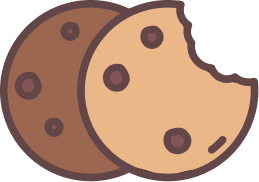#TakeCharge with #Aimshala
How make a career in Textile Design Assistant
A career as a Textile Design Assistant provides an exciting opportunity to blend creativity with technical skills in the textiles industry. Individuals interested in this path typically need a solid educational foundation in textile design, fashion design, or a related field. A bachelor's degree is essential, followed by hands-on experience through internships, workshops, or working in textile companies. Building a portfolio showcasing design work is crucial for job applications. Networking with industry professionals and staying updated with trends and technologies in textile design are also important. With the right education, experience, and passion for textiles, one can establish a fulfilling career in this dynamic field.
Career in Textile Design Assistant
What are the roles and responsibilities in Textile Design Assistant?
- Assisting in Design Development : Textile Design Assistants support designers in creating new textile patterns, colors, and fabric structures, contributing to the overall design process.
- Researching Trends : They conduct market research to identify current trends in textiles and fashion, helping to inform design decisions.
- Preparing Samples : Textile Design Assistants prepare fabric samples and prototypes to present to clients or for internal reviews.
- Collaborating with Production Teams : They work closely with production teams to ensure designs are feasible for manufacturing and meet quality standards.
- Maintaining Design Documentation : Textile Design Assistants keep detailed records of design processes, materials used, and revisions made throughout the design cycle.
What education is required to study Textile Design Assistant
Check out the dates of the total number of candidates who have appeared in the CUET 2022 exam from the below table.
Stream |
Graduation |
After Graduation |
After Post Graduation |
|
|
Path 1 |
Completion of high school with a focus on art, textiles, or design subjects. |
Bachelor of Arts or Bachelor of Science in Textile Design or Fashion Design. |
Master's degree in Textile Design or specialized fields such as Fashion Technology. |
Certifications in design software or specialized textile techniques. |
|
Path 2 |
Completion of high school with emphasis on vocational training in textiles or design. |
Associate's degree in Textile Technology or Fashion Merchandising. |
Certifications in advanced textile design or fashion design. |

Feeling unsure about
your future?
Let's find the perfect career path for you!
with AI-powered career
guidance

What are the key skills required for Textile Design Assistant
- Creativity - Creativity is essential for generating innovative design ideas and concepts in textile design.
- Technical Skills - Proficiency in design software such as Adobe Illustrator and CAD is crucial for creating digital designs and patterns.
- Attention to Detail - A keen eye for detail ensures that designs are executed accurately and meet quality standards.
- Communication Skills - Effective communication is vital for collaborating with designers, clients, and production teams.
- Time Management Skills - Managing multiple projects and meeting deadlines is key to success in the fast-paced textile design industry.
What are the career opportunities in Textile Design Assistant?
- Textile Designer - Textile Designers create patterns and designs for fabrics used in fashion, interiors, and other applications.
- Fashion Designer - Fashion Designers develop clothing and accessories, often incorporating textile design into their work.
- Production Manager - Production Managers oversee the manufacturing process of textiles, ensuring quality and efficiency.
- Textile Technologist - Textile Technologists focus on the technical aspects of fabric production and quality control.
- Merchandiser - Merchandisers analyze market trends and consumer preferences to guide product development and sales strategies.
What is the salary and demand for Textile Design Assistant?
- Salary Overview - The typical salary for Textile Design Assistants ranges from $40,000 for entry-level positions to over $70,000 for experienced professionals, with variations based on education and location.
- Regional Salary Variations - Salaries can vary significantly by region; for example, Textile Design Assistants in fashion hubs like New York or Los Angeles may earn more than those in smaller markets.
- Current Job Market Demand - The demand for Textile Design Assistants is growing due to the expanding fashion and textiles industry, driven by trends in sustainability and innovation.
- Future Demand Projections - Future demand for Textile Design Assistants is expected to rise as the industry evolves with new technologies and consumer preferences shift towards sustainable practices.
Leading companies for careers in Textile Design Assistant

Nike

Adidas

H&M

Zara

Levi Strauss & Co.

Ralph Lauren

Burberry

Lululemon
What are the best colleges for Textile Design Assistant in India?
Undergraduate
College |
Location |
Website |
|
National Institute of Fashion Technology |
New Delhi |
https://www.nift.ac.in |
|
Pearl Academy |
Delhi |
https://www.pearlacademy.com |
|
Shri Ram College of Commerce |
Delhi |
https://www.srcc.edu |
|
Srishti Institute of Art, Design and Technology |
Bengaluru |
https://www.srishti.ac.in |
|
MIT Institute of Design |
Pune |
https://www.mitid.edu.in |
Postgraduate
College |
Location |
Website |
|
National Institute of Fashion Technology |
New Delhi |
https://www.nift.ac.in |
|
National Institute of Design |
Ahmedabad |
https://www.nid.edu |
|
Symbiosis Institute of Design |
Pune |
https://www.sid.edu.in |
|
Indian Institute of Technology, Delhi |
New Delhi |
https://www.iitd.ac.in |
|
Indian Institute of Art and Design |
Delhi |
https://www.iiad.edu.in |
What are the best colleges for Textile Design Assistant in Abroad?
College |
Location |
Website |
|
Fashion Institute of Technology |
New York, USA |
https://www.fitnyc.edu |
|
Central Saint Martins |
London, United Kingdom |
https://www.arts.ac.uk/colleges/central-saint-martins |
|
Rhode Island School of Design |
Providence, Rhode Island, USA |
https://www.risd.edu |
|
Parsons School of Design |
New York, USA |
https://www.newschool.edu/parsons |
|
Royal College of Art |
London, United Kingdom |
https://www.rca.ac.uk |
What are the top entrance exams in India for pursuing a career in Textile Design Assistant
College |
Tentative Date |
UG/PG |
Important Elements |
Website |
|
National Institute of Fashion Technology |
January |
Undergraduate |
General Knowledge, Mathematics, and Creative Ability. |
https://www.nift.ac.in |
|
Pearl Academy |
April |
Undergraduate |
Design Aptitude Test, General Knowledge, and English. |
https://www.pearlacademy.com |
|
National Institute of Design |
February |
Postgraduate |
Design Aptitude Test, General Knowledge, and English. |
https://www.nid.edu |
|
Symbiosis Institute of Design |
May |
Undergraduate |
Design Aptitude Test and General Knowledge. |
https://www.sid.edu.in |
|
Indian Institute of Technology, Delhi |
March |
Postgraduate |
Design Aptitude Test, Mathematics, and General Knowledge. |
https://www.iitd.ac.in |
Pros & Cons of a Career in Textile Design Assistant
Pros
- Textile Design Assistants have the opportunity to work in a creative and dynamic environment, contributing to innovative designs.
- The field offers competitive salaries, especially for those with advanced skills and experience.
- Professionals in this field can positively impact sustainability through eco-friendly textile designs and practices.
- The career provides opportunities for continuous learning and growth, with exposure to various aspects of design and production.
Cons
- The job can be demanding with tight deadlines, especially during peak fashion seasons.
- Some roles may require extensive collaboration, which can lead to conflicts in creative vision.
- The industry can be highly competitive, making it challenging to secure positions in top companies.
- The work may involve long hours and occasional travel for fabric sourcing or production oversight.
Did you find this information helpful?


Report
0 out of 0 found this helpful


